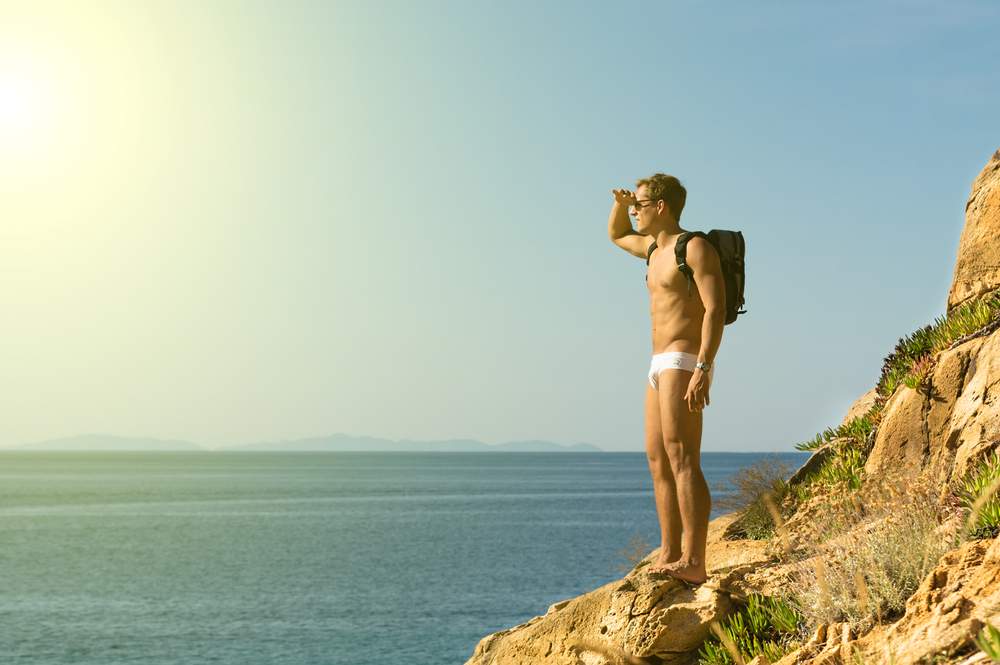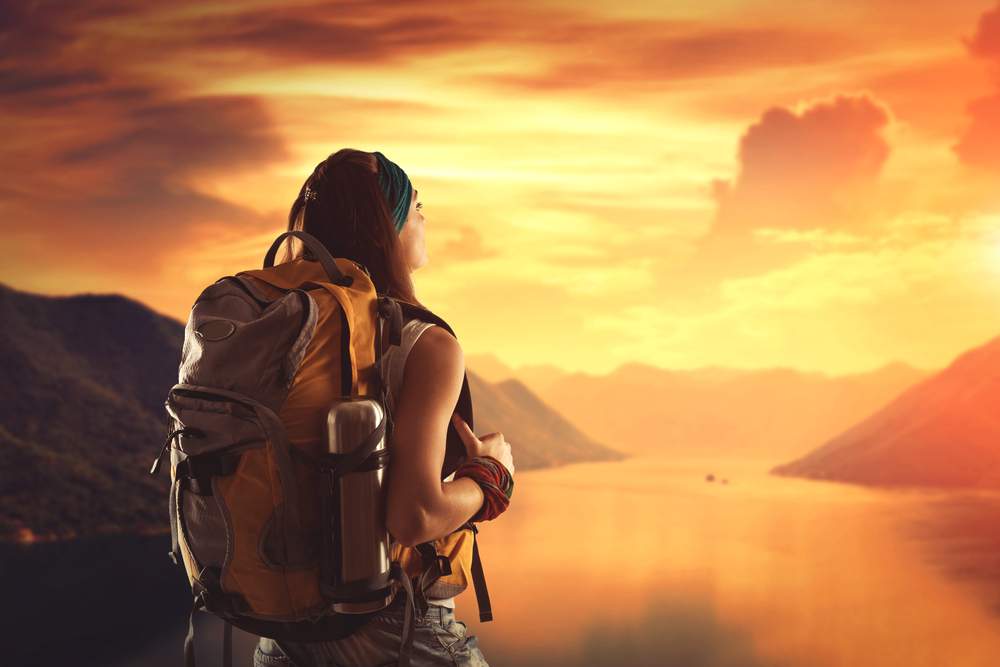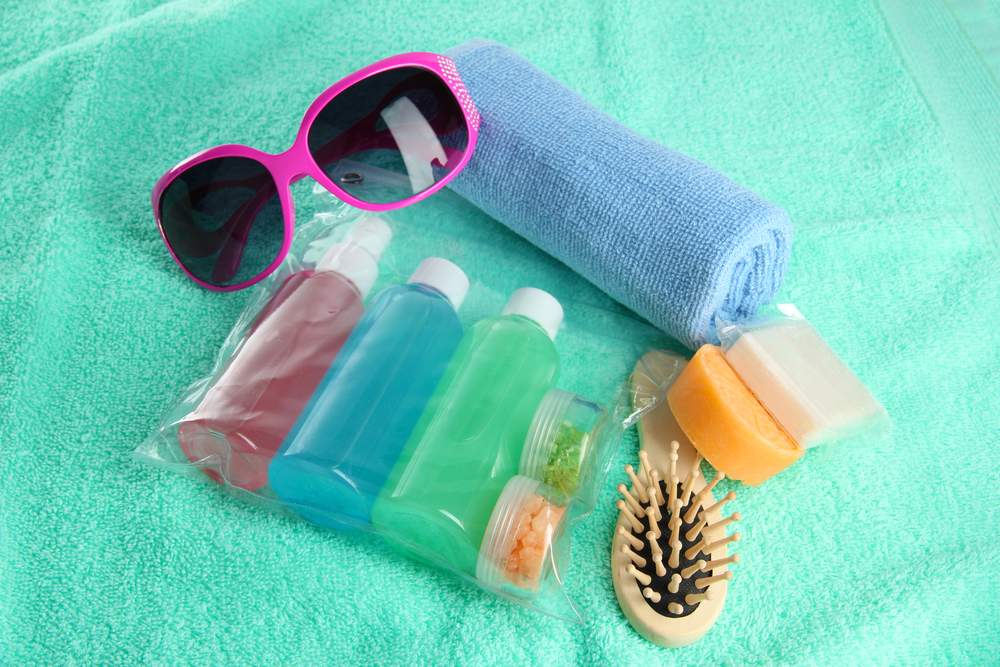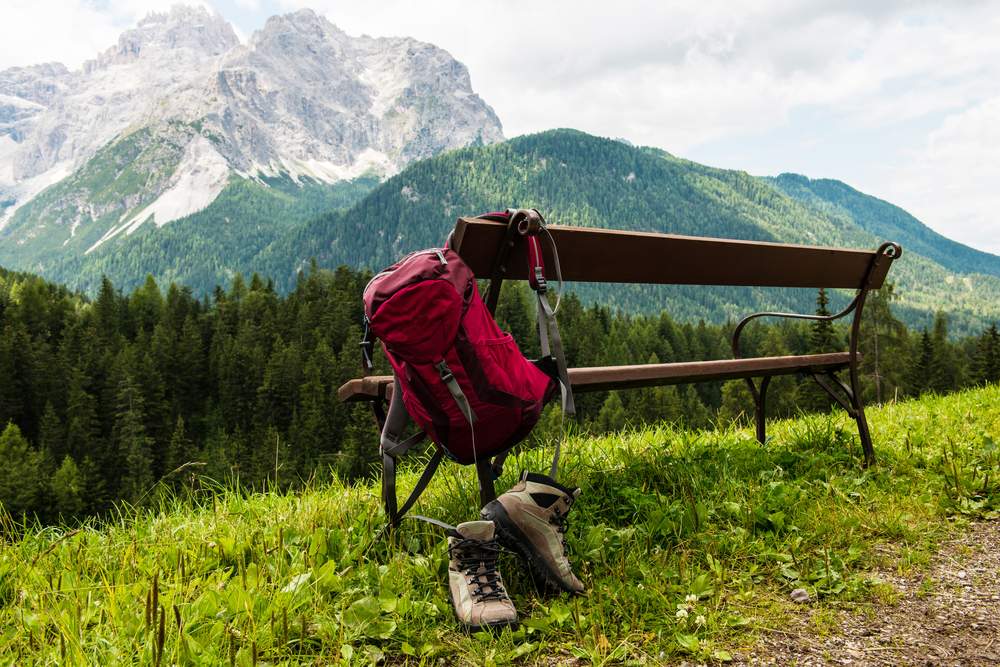Luckily, my husband is the original light packer and multi-tasker, so we are the perfect travel team. After traveling together for five years, Luis and I finally have packing down to a science. We started with a full backpack each and several daypacks and smaller bags, but after many misadventures running, fully-loaded and off-balance, through the driving rain and wind to make last-minute bus connections in the remote pampas of Argentina, or having to ferry our belongings back and forth multiple times between customs and immigration offices on the back of a rickety scooter at a rooster-infested Bolivian border crossing, we got smart.
Why it’s important to travel lightly

Clever packing allows travelers to truly enjoy trips, free of the worry of having to carry and keep track of many pieces of luggage and from having to plan an elaborate wardrobe. The less to carry, the better: the weight of luggage seems to increase exponentially as travel wears on.
Aside from the benefit of saving money (as most carriers now charge for extra luggage and weight), carrying less frees you from having to keep track of many pieces of luggage, which is especially useful when traveling long-term, rushing to make travel connections, or traveling in less than secure areas. It is much easier to keep an eye on one bag than four or five. It is also much less likely that you will be confused or easily distracted by thieves and scam artists, or that your luggage will be lost.
Want to take it to the extreme when it comes to packing lightly? See how Rolf Potts traveled the world with NO bags in the No Baggage Challenge.
Why you don’t need all that stuff

Once you figure out which clothes work for you when traveling, it can be freeing: packing takes almost no time at all, dressing is simple and you will feel great when you realize how very little you really need to survive.
Obviously there are exceptions, but much of this gear can be rented when you arrive at your destination. And if you forget something or find that you need something that you didn’t bring, remember that no matter where you are, from New York City, to Kathmandu, to a small town in Russia, people there need to wear clothes, bathe, and live, so you will be able to find what you need while on the road. Will you have the same choices as home? Of course not, but you’re not traveling to get the same comforts of home, right?
Learn how to pack for a RTW trip with no luggage at all
How to do it
Lightweight hiking pants can be converted to shorts in seconds; sleeves and linings can be added and removed quickly as the climate changes. The wide variety of super-functional lightweight fabrics make it easy to avoid taking heavy cotton, wool or polyester clothing, which take forever to wash and even longer to dry.
Read How to Pack for a Long-Term Trip, complete with his and hers packing lists and recommendations for clothes and gear.
Bring the basics

• Take a couple of sturdy, plastic bags to use for keeping your dirty clothes separate. Bring some plastic clothes pins and a lightweight, flexible laundry line with a loop at each end (a string works just fine as well, just make sure you know how to tie a good knot). Keep clothes clean by washing them yourself in a sink, and when in developing areas, you can send your laundry out to be done for minimal costs. A small can of Febreze for removing odors can also be useful when there is no time to wash and dry your clothes, and can also be used to freshen sleeping bags, towels, or bedclothes.
• Don’t take new clothes or clothes that you seldom wear at home. Make sure that every item is something that you are comfortable wearing repeatedly. If you find that the new pair of pants that you brought is uncomfortably tight in the crotch, you will never wear them, and they will become dead weight. Some people like travel-specific clothing, and that’s what they stock up on for travel. Others like to wear what they wear at home – jeans, t-shirts, etc., and wouldn’t be caught dead in a pair of zip-off pants – you have to bring what you’re comfortable wearing. Just know the pros and cons of each.
• Keep clothes in neutral, solid, non-running colors. This serves two purposes: it will be easier to mix and match outfits, and you will be able to wash everything together or at least in only two loads. If you tend to be messy, you may want to stick to darker colors that hide stains better.
• Shoes should be lightweight, comfortable and waterproof. Almost every hiking shoe, walking shoe or sneaker is available with Gore-Tex or a similar waterproofing agent. Flip-flops can be worn in the shower to avoid picking up nasty things like athlete’s foot, at the beach, when walking across stony creeks or rivers, on boats, for sightseeing in warmer climate cities, or as bedroom slippers. It’s not necessary to take both hiking boots and sturdy sneakers unless you are doing some serious mountain trekking. Wear your bulkiest shoes in transit to save the room and the weight in your backpack. You may also want to bring a lightweight pair of flat shoes, such as ballet flats for women or loafers or topsiders for men, just in case you need something a little more formal.
Make items do double-duty

• Toiletries: Shampoo can also be used to hand-wash your clothes or as bodywash. Perfume doubles as air or fabric freshener. Cotton pads soaked in alcohol and sealed in a Ziploc bag can be used to clean oily skin, disinfect cuts and scrapes, remove ink stains from skin and clothing, clean glasses, and sanitize things in hotel rooms or hostels (toilets, TV remotes, phones, etc). Baby wipes are great for this as well, plus they can work as your “shower” for the day when in a pinch (hey, no one said travelers are the cleanest people around).
• A sarong: A sarong or pareo has multiple uses and can serve as a towel, a swimsuit cover-up, a beach blanket, a scarf, a wrap for keeping warm on buses or planes, a skirt, a shawl for covering shoulders, legs or head when visiting places of worship, a makeshift tote, or a tablecloth for picnicking. A large microfiber travel towel can serve many of the same purposes in a pinch.
• A nylon cord: A thin nylon cord can be used as a laundry line, for securing backpacks or camping gear, hanging food from trees when sleeping outdoors, last-minute repairs, or emergency shoelaces.
• Duct tape: Duct tape can be used to prevent blisters by wrapping feet before hiking, supporting sprains and minor fractures in an emergency, to secure backpacks, make minor repairs, seal holes in tents or screens, and seal gaps in hotel windows and doors.
• Cotton bandanas: Bandanas can serve as scarves, head covers, napkins, facecloths, mini towels, wraps (sandwiches, delicate items), and can be tied into small bags for carrying souvenirs, etc.
Technology

• Music players: Devices such as the iPod allow you to take your entire music collection, audio books and travel guides, and every podcast that you ever wanted to hear. They also have room for photo storage.
• E-readers: E-readers like the Amazon Kindle are a godsend. With an e-reader, you can download hundreds of books before you leave home. They also save room and the weight of carrying around bulky guidebooks, which can also be downloaded, either in complete book form or by chapter. Lonely Planet, for example, allows buyers to purchase and download individual chapters or regions of their guidebooks, instead of the whole book. E-readers can also store Word and PDF documents, maps, music, and photos.
• Netbook, iPad, and Smart Phones: Extra storage and wireless internet access can be a lifesaver. A small Netbook, iPad, or cell phone with internet access will allow you to stay in touch with your friends and family, book airline and hotel reservations, download travel information, and update your blog without having to go to an internet café. It also keeps your data secure and uninfected by avoiding PCs used by thousands of travelers and locals, which often harbor unseen spyware or viruses.
• Flashdrive: A pendrive or flashdrive takes up almost no room and can be useful in storing emergency information/contacts, photos and documents such as copies of passports and credit cards, travel reservations, and maps.
Sharing saves space
You don’t need two bottles of shampoo, conditioner, toothpaste, sunscreen, or insect repellent. If you can agree on a brand or type, one bottle of each will be plenty. If you run out, you can buy pretty much anything locally, and international brands can be really, well, interesting, to say the least.
Packing

One of my pet peeves about many backpacks is that the items inside can be so inaccessible, so I had our local tailor install a heavy-duty zipper around the periphery of the bag so that I could just open it up like a sardine can, easily and quickly adding or removing items. It is also helpful and time-saving when coming through international customs, as the officers can do a much quicker search. Many of the new backpacks already have zippers on the bottom, top and sides, making life much easier for travelers, so keep that in mind when shopping for luggage for your trip.
• Use structured net bags or packing cubes. These light, washable bags come in various sizes and colors and can be packed with individual categories of items, making things much easier to organize and find. I use one bag for underwear, one for socks, one for toiletries, one for t-shirts, etc. Carry a light, quick-drying laundry bag to keep dirty clothing separate from clean (this can also double as a pillow case if needed).
• Don’t take unnecessary items that you will regret having to carry later. Hair dryers, curling irons, electric shavers, heavy books or guides, expensive (or expensive-looking; thieves don’t know the difference) jewelry or watches, a full-size laptop, or large pillows or blankets will make your life miserable in short order. When it comes to clothing, everyone has an opinion, and you ultimately have to do what’s right for your situation. For traveling super light, clothing items you may want to avoid are items that can be worn with only one other thing, heavy boots, high-heeled or dress shoes, heavy cotton or wool items such as jeans or bulky sweaters.
• Roll clothing to avoid wrinkles and to save space. Rolled items can also be tucked into small spaces, such as shoes, outer pockets or daypacks. When using packing cubes, more items can be squeezed in when rolled and rolling also helps to keep more of the surface of a garment clean. Wrap shoes in individual plastic bags to protect other clothing. Always tuck in a few extra plastic grocery bags; they take up almost no room, weigh nothing, and can be used for storing wet towels and bathing suits, as a laundry bag, for wrapping shampoo bottles to prevent leakage, or for food storage. A collection of ziploc bags are also really nice to have.
Read Everything You Need to Know About Finding the Perfect Travel Luggage
Sample packing list

Although this list seems pretty basic, it will work for most trips and climates and will fit nicely into one half of a standard backpack or a medium sized carry-on. You should tailor the packing list and techniques to your own needs, but once mastered, you can use this list and your newfound skills for all your trips.
• 4-5 t-shirts: 2-3 short-sleeved, 1-2 long-sleeved, for women, work in a sleeveless or tank top, depending on climate you’re visiting
• 1 sweater or microfleece
• 1 long-sleeved shirt: convertible, lightweight, quick drying, wrinkle-resistant
Any combination of (depending on climate):
• 1-2 pairs convertible lightweight pants: (can be converted to shorts with a zipper) in different colors
• 1-2 pair comfortable drawstring pants: such as yoga pants (for relaxing, the beach, sleeping, or for long bus, plane, or train rides
• 1-2 pair of shorts
• 1 skirt or dressier shorts: in a neutral color
• 1 bathing suit for men: any style. For women: 1 one-piece and 1 bikini
• 5 pairs of socks; 5 pairs of underwear; 2 bras: sports bras or undershirts
• 1 windproof, water-resistant jacket: with a removable lining and hood
• 1 lightweight plastic rain poncho with hood: should be large enough to cover you and your backpack
• Sunhat or cap & sunglasses
• 1 sarong (pareo)
• 1 scarf & gloves:wool, cotton or silk, depending on the weather, in a washable material
• 1 pair of flip-flops; 1 pair of either sneakers or hiking boots; 1 pair of dressier shoes:flat, light, such as loafers
• Toiletries: shampoo, conditioner, sunscreen, insect repellent, moisturizer, toothpaste, deodorant, etc.
• First aid kit with emergency travel meds:Cipro, Ant-diarrheal, anti-histamine, elastic bandage, Band-Aids, etc.
• Tech:E-reader, Ipod, Netbook, camera with storage cards, batteries and/or chargers and adapters
Read How to Choose Clothes for Your Trip
Although traveling lightly may at first seem drastic or impossible, the truth is that it just takes a little practice to master. Of the many benefits, you will gain a new sense of confidence and independence once you realize that your enjoyment of life is not tied to owning (and carrying) the largest number of material things possible. You will find that, in fact, you need very little to live happily. That can be an incredibly liberating and transforming feeling.
Having less luggage allows you to focus on the trip, taking in the incredible sights and experiences instead of biting your nails about how much you have to carry, what to wear, or whether your belongings are safe. Learning to pack well and lightly, leaving unnecessary items behind, is learning to travel well. It is a skill that you can learn and perfect, one that will also serve you in everyday life, increasing your confidence, reducing your load, and helping you to enjoy the ride.
Want to learn to be a better packer? These articles will help:
Photos by: studioVin , Nomad_Soul , burnel1 , Jaromir Chalabala , Africa Studio , progressman , Oleg Malyshev , nataliafrei , Ser Borakovskyy
